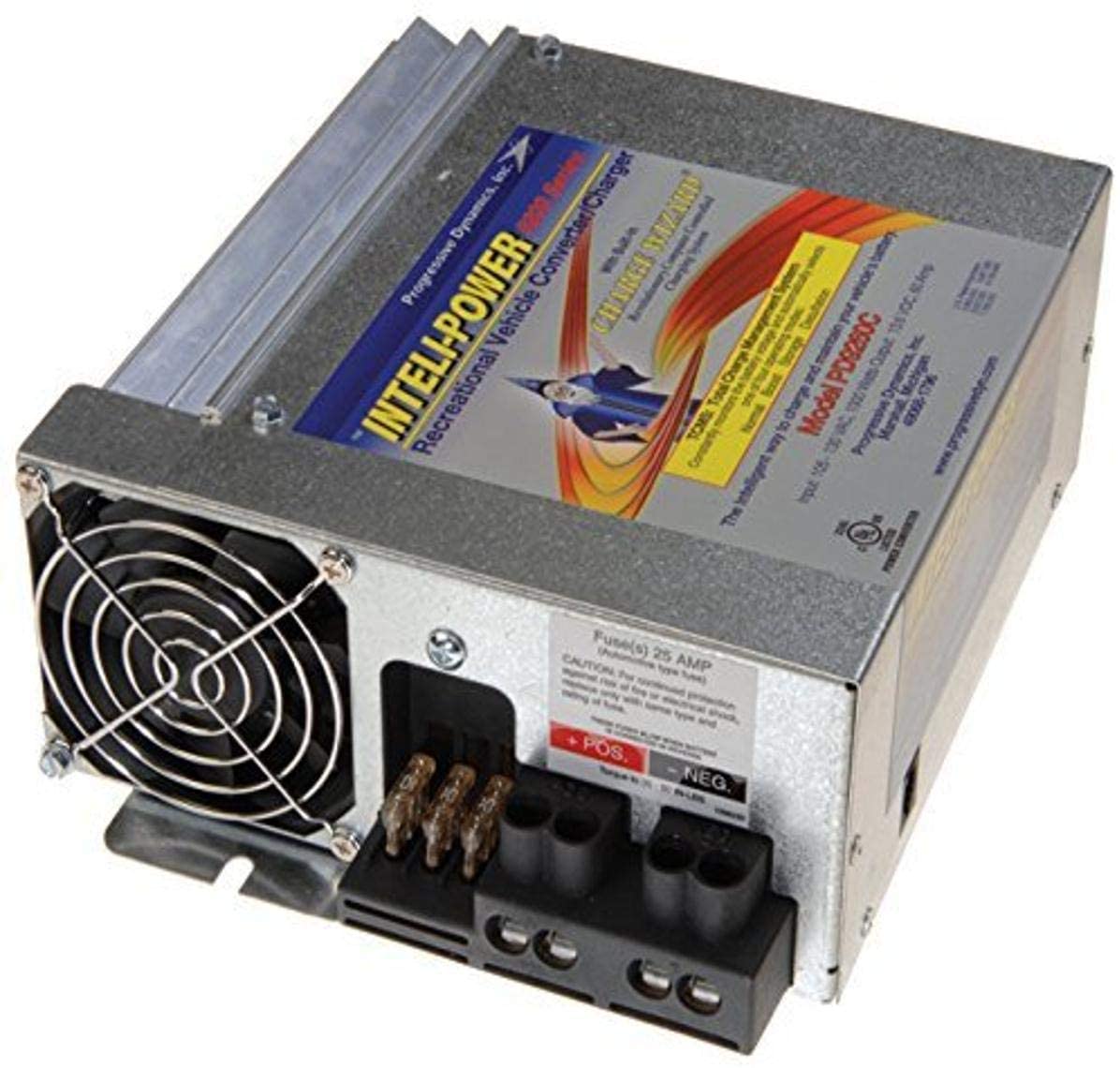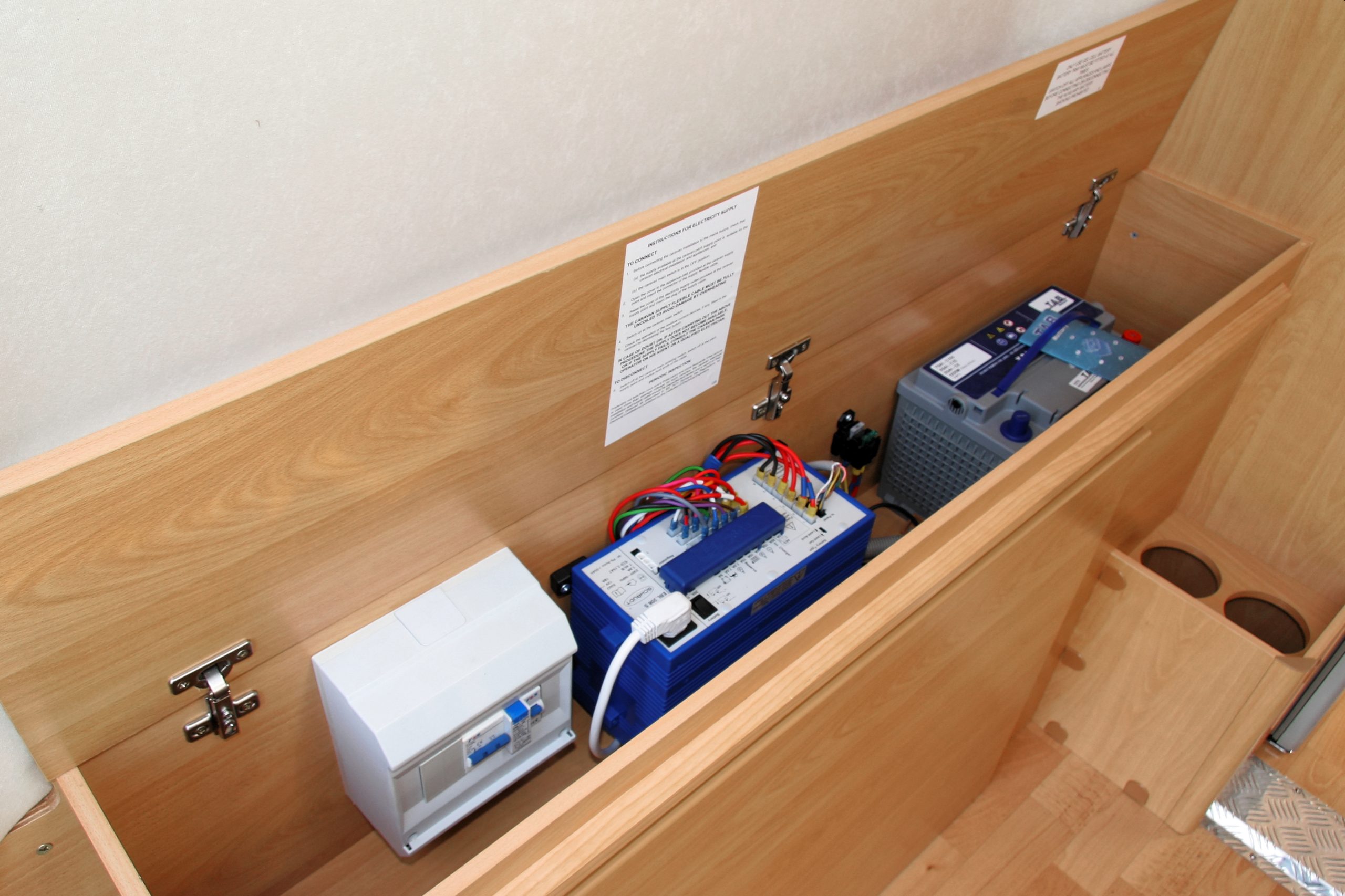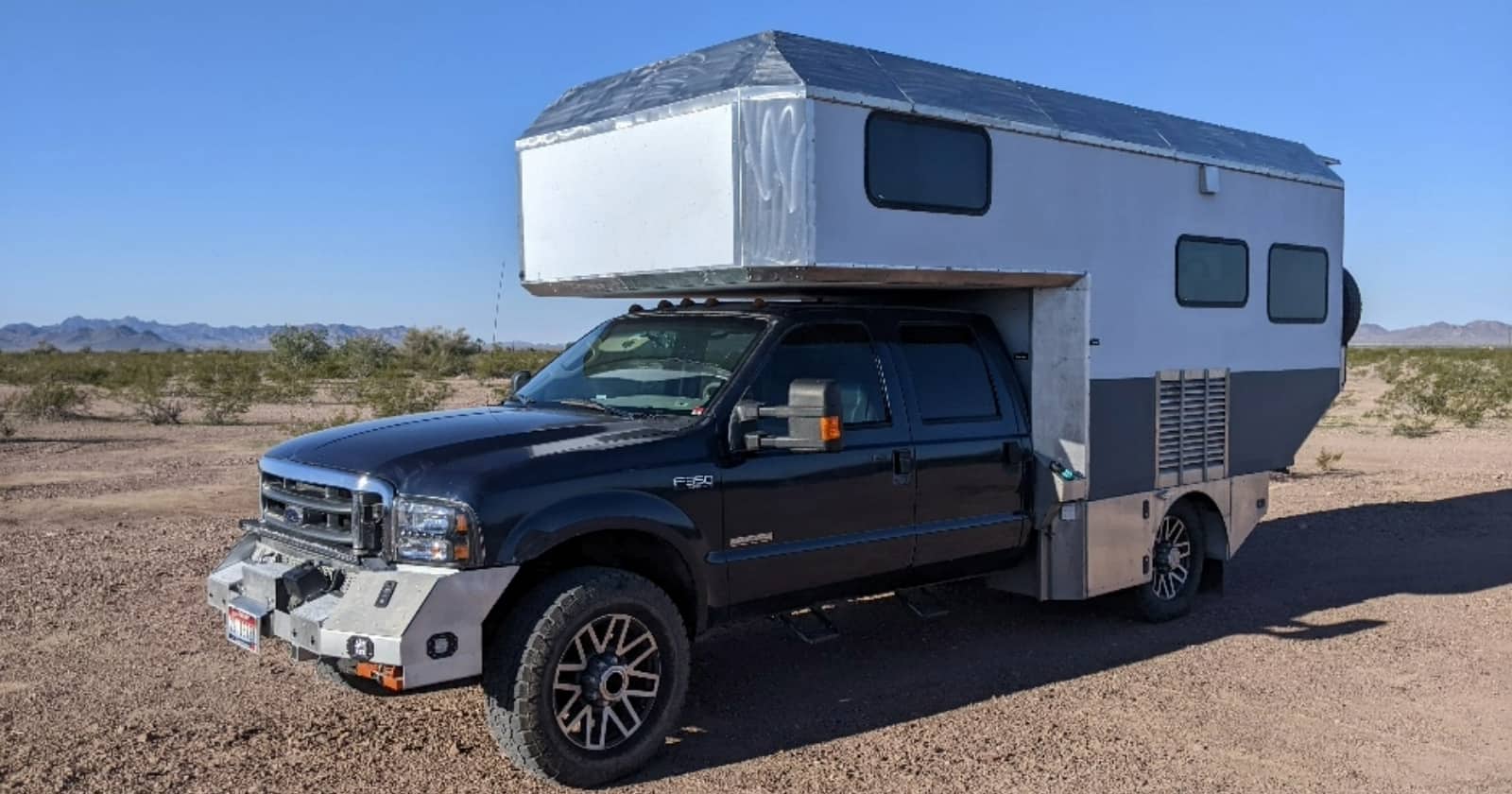
RV Power Converter Troubleshooting Guide
Your RV power converter is the brains of your RV. Without it, power will be limited and ultimately the function of your RV will be minimal.
Hidden away in cabinetry or under a seat, the power converter often goes unnoticed and many people don’t even know what it does.
What is the purpose of an RV power converter?
When plugged into shore power at a campground or running off a generator, your RV is supplied with 110 volt AC power.
Some things in your RV such as your air conditioner require AC power. However, many things including lights, outlets, and appliances require 12 volt DC power. Your RV batteries provide 12-volt DC power but are limited to how long they can provide that power before the charge drops.
The power converter’s job is changing the current from AC to DC along with keeping the RV batteries fully charged.
This is the opposite of the RV’s power inverter which changes DC power from the batteries into AC power.
Signs of a faulty power converter
A faulty RV power converter will most often show itself as dimming or flickering lights, or the loss of use of 12 volt powered items such as electrical outlets, lights, refrigerator, or low battery charge.
When your RV’s converter is working properly, it should have an AC voltage reading between 110 to 130 volts. This translates to a DC voltage reading at the batteries of 11 to 13 volts.
An easy way to isolate the power converter from a bigger electrical issue is to plug your RV into shore power and check your microwave or TV. These appliances run on 110 volt AC power. If they are on but your lights are not working, then there is power to the RV but nothing is converting to 12 volt DC. This would likely lead to a converter issue.
Before assuming your converter needs to be replaced, check the cheap, easy-to-fix things that may be causing issues commonly associated with a bad RV power converter.
Fuses and breakers
Fuses are easy to check with a test light by touching both sides of the fuse and checking for power or using a multimeter to check for power. If you don’t have either of these tools, you can simply pull the fuse and visually see if it has blown.
Check the fuses for any items that are not working. The power converter itself will also have a few fuses that should be checked.
A wiring issue such as a short or bad ground will likely result in a blown fuse or a tripped breaker. The breakers, fuses, and in many cases the power converter, will all be located together.
Batteries
The converter’s job is to keep the RV batteries fully charged and lessen the drain of power from them. If you have a bad battery that is no longer holding a charge, this can present itself as an issue with your power converter.
The reading at the battery should be approximately 12.7 volts. If you have a fully charged battery and check it again after a few hours of use, it should still have a full charge. If the reading is dropping, your battery isn’t holding a charge and should be replaced.

RV power converter troubleshooting
RV power converter troubleshooting includes a variety of tests you can perform.
The first thing to check is the fuses on the converter and the breaker for the converter. If these are good you can then check the converter for proper function.
If the breaker for the converter was tripped, unplug the converter and reset the breaker. If the breaker trips with the inverter unplugged, this would suggest a wiring problem between the outside power source and the electrical outlet the converter is plugged into. Should the breaker not trip immediately, but does trip once the converter is plugged back in, this suggests a problem with the converter.
The converter should have 110 volt AC power running to it from the outside power source. With a multimeter, check the outlet that the converter is plugged into for power.
This 110 volt AC power runs through the converter and exits as 12-volt DC power. The connection leaving the converter should read 11-13 volts DC on your multimeter.
If the converter has power running to it but no power or low power readings leaving the converter, you have a faulty converter.
Internal components
Many converters are riveted together as they are not meant to be serviced by owners. If this is the case, RV power converter troubleshooting can be difficult on these components.
The power converter will have sensitive electrical connections and a circuit board that must be handled with care.
Locating and replacing the fan, temperature sensor, load sensor, or circuit board in many cases warrants the replacement of the entire power converter.
Converter fan
When working correctly, the converter fan should be turning on periodically to help cool the internal components. If the fan fails, the converter can overheat and cause premature failure.
With a multimeter, you can check that the fan is receiving power. If it is receiving power but isn’t turning on, odds are the fan is bad. It is possible to replace just the fan if you can source it. This can be significantly cheaper than replacing the entire power converter.
Temperature and load sensors
A temperature sensor measures heat build-up produced by the converter and signals the fan to turn on for cooling. A load sensor measures how many 12-volt accessories are running and starts the fan. It is possible for these sensors to fail, and as a result, not signal the fan to start.
If internal access is available, you can do some further RV power converter troubleshooting. Check that power is going to the sensor and that when it reaches max temperature or load, that the power is then going to the fan.
Bringing it up to temperature can be done using a heat gun or hairdryer. The load can be added by turning on the lights. If the power doesn’t pass through once, but there is enough load or a temperature increase, the sensor is faulty.
RV power converter troubleshooting can be easily done with some patience and understanding of how they function. Forums such as iRV2.com and blog sites like RV LIFE, Do It Yourself RV, and Camper Report provide all the information you need to enjoy your RV. You’ll also find brand-specific information on additional forums like Air Forums, Forest River Forums, and Jayco Owners Forum.
Continue reading:



